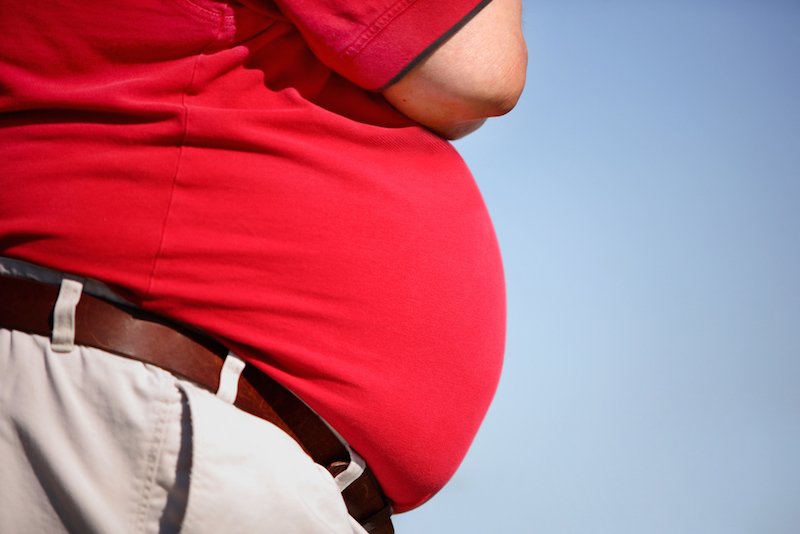
Want to Cut Your Cancer Risk? Lose That Weight (Op-Ed)

Dr. Seun Sowemimo is a board-certified bariatric surgeon and obesity expert at CentraState Medical Center in Freehold, N.J., where he maintains a private practice.
Dr. Mary Martucci, a board-certified general surgeon and breast surgical oncologist, is medical director of The Star and Barry Tobias Women's Health Center at CentraState Medical Center. They contributed this article to Live Science's Expert Voices: Op-Ed & Insights.
It’s not news that being significantly overweight is detrimental to your health, regardless of age or fitness level. But a new report released by the American Society of Clinical Oncology (ASCO) reinforced what those of us who work in obesity and cancer treatment have known for years: Obesity will soon become the number one risk factor for cancer, even surpassing tobacco use.
ASCO determined most people understand obesity is associated with a significantly elevated risk of heart disease, stroke and diabetes — but not cancer. Even with decades of progress in cancer prevention, early diagnosis and treatment, by 2030, the United States may see as many as 500,000 cancer cases.
And the primary reason will be obesity.
During the past 20 years, there has been a dramatic increase in obesity nationwide, and rates remain stubbornly high. According to the U.S. Centers for Disease Control and Prevention, nearly 35 percent of adults and approximately 17 percent of children and adolescents aged 2 years to 19 years are obese. The rate is highest in people older than age 40.
The same ASCO report calls for immediate and substantive increases in weight control education, research and advocacy to raise public awareness — not only to prevent obesity-associated cancer, but to offset obesity's role in increasing cancer treatment complications.
How can excess fat cause cancer?
Researchers are exploring several hypotheses for how extra body fat can increase a person's cancer risk. The answer appears to be slightly different for each type of cancer, but obesity seems to cause chronic inflammation, which in turn may promote cancer development. Inflammation occurs when the body reacts to noxious stimulus (tissue damage) or injury.
As an example, chemicals in the body that regulate inflammation do so by increasing production of the hormone estrogen, and excess estrogen has been shown to cause breast cancer tumors. Fat tissue also produces hormones called adipokines, which can stimulate or prevent normal cell growth. If these hormones are out of balance, the body may not be able to properly fight cell damage.
Does that mean if you achieve a normal body weight you won't get cancer? Unfortunately no. But the key scientific findings do show that a healthy body weight can minimize risk.
Obesity's impact on cancer
Some types of cancer appear to be closely linked to carrying extra weight and have been found to be associated with these specific types of cancer:
- Breast (in women who have been through menopause)
- Colon and rectal
- Uterine
- Kidney
- Esophageal
- Pancreatic
- Endometrial
- Thyroid
- Gallbladder
Obesity-related pain or irregular hormone levels can disguise some of the early warning signs of some cancers. Fatty tissue may also make it difficult for doctors to see smaller tumors on imaging scans. A later-stage diagnosis often means a lower chance for survival or could necessitate more invasive therapy.
Additionally, surgery, radiation, chemotherapy and other treatments may be challenged by a patient's size. If the patient needs an operation, excess fat can put them at higher risk of complications because there is greater physical difficulty in performing the procedure if the anatomy is obscured by fatty tissue or difficult to recognize. And, poorer perfusion (the passage of fluid through the vessels of a specific organ) and oxygen supply to excess fatty tissue impairs healing. Obesity associated medical conditions — sleep apnea, diabetes and a propensity to form blood clots — may also interfere with recovery.

The ASCO report cited statistical data compiled from 82 separate studies involving more than 200,000 breast cancer patients. The results were clear:
- A 75 percent increase in mortality among premenopausal women and a 34 percent increase in postmenopausal women who were obese at the time of diagnosis, compared with those of normal weight.
- Obese men appeared to have greater risk of aggressive prostate cancers and were more likely to have advanced disease at diagnosis.
Another argument for adopting a healthy lifestyle
The ASCO strongly recommends multispecialty collaboration between primary care doctors, obesity treatment specialists and oncologists to collectively help people of all ages with weight challenges. Primary care physicians, and other physicians seeing patients for obesity-related ailments, should recognize the disease and prescribe a clear plan for the patient to lose weight or refer them to a specialist, such as a bariatrician or bariatric surgeon. Weight management may involve a nutritionist, exercise physiologist, psychologist, bariatrician or bariatric surgeon.
As we age, staying fit is more challenging as our metabolism slows. But this is also the time during a person's life cycle when cancer risk increases exponentially. Losing weight alone cannot prevent cancer. But extensive evidence showing that obesity will soon be the number one cause of this life-threatening disease should send a stern message to everyone about the importance of waging war against it. Without question, doing so will help offset a host of debilitating chronic diseases from interfering with your quality of life and your longevity.
The effort to live a healthy lifestyle is well worth it — today, tomorrow and 20 years from now.
Follow all of the Expert Voices issues and debates — and become part of the discussion — on Facebook, Twitter and Google+. The views expressed are those of the author and do not necessarily reflect the views of the publisher. This version of the article was originally published on Live Science.
Sign up for the Live Science daily newsletter now
Get the world’s most fascinating discoveries delivered straight to your inbox.










